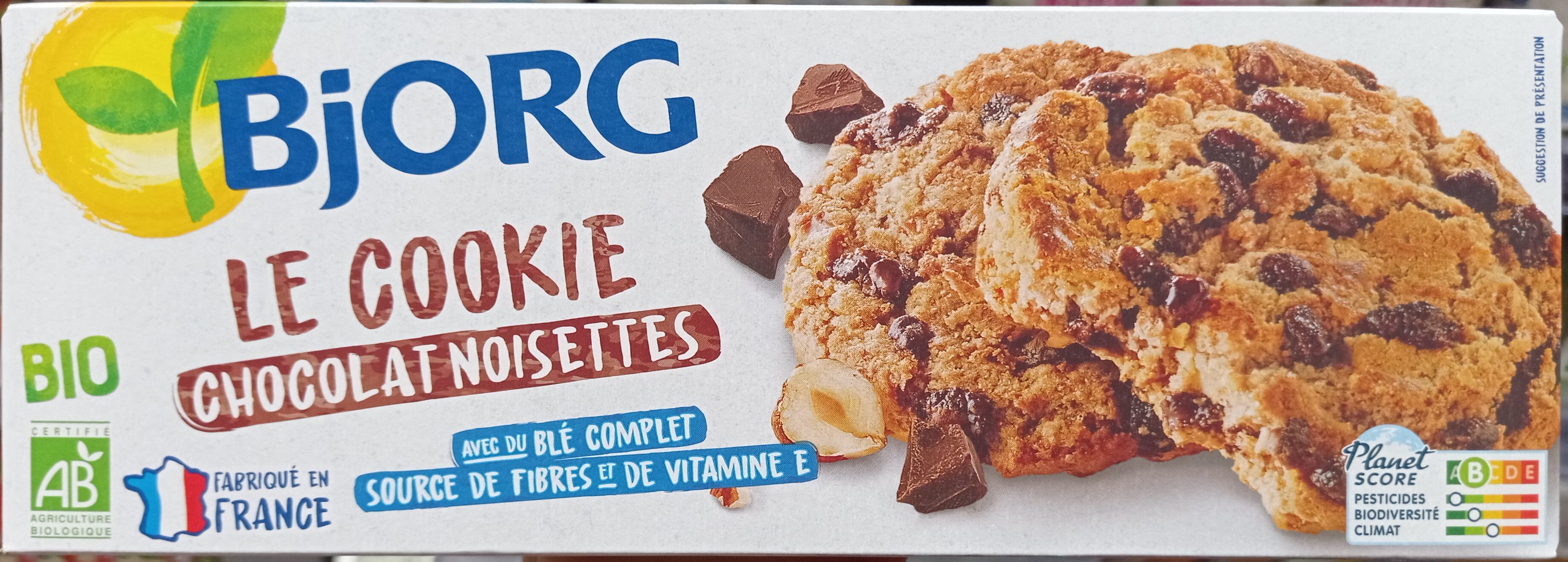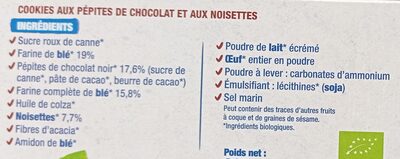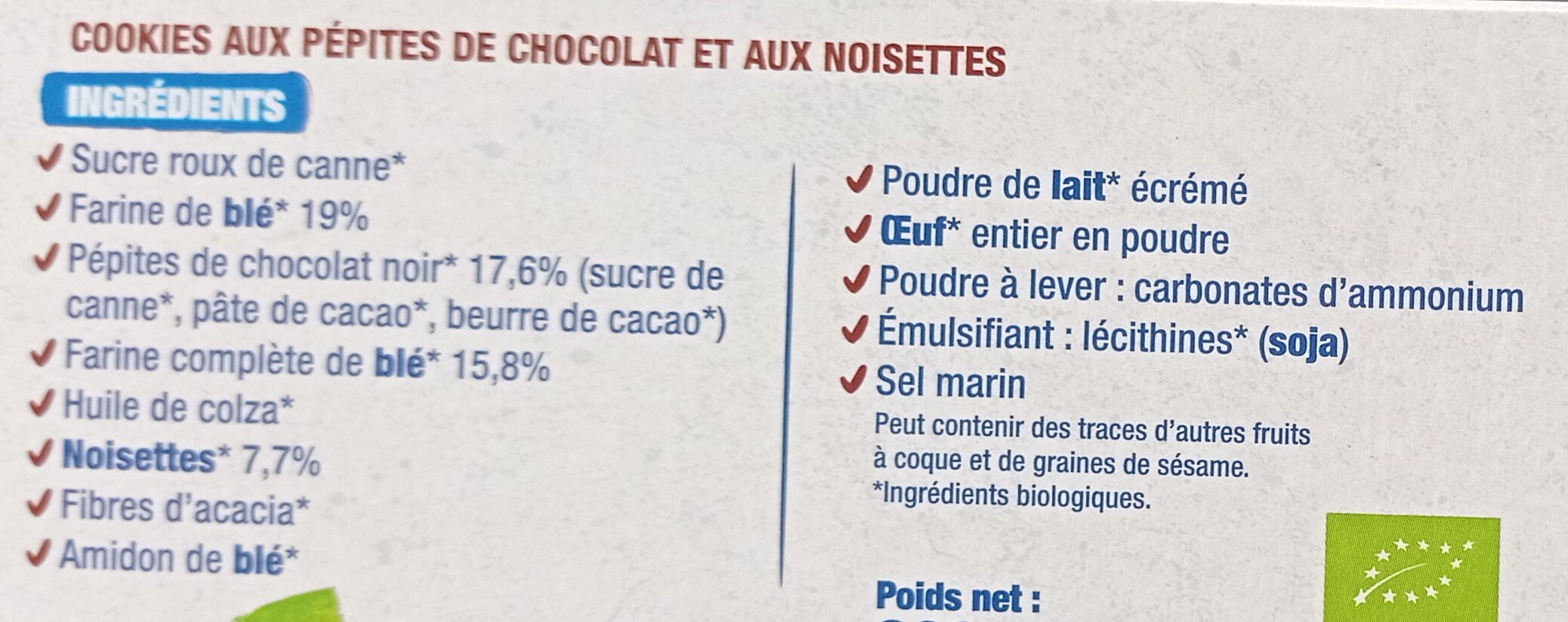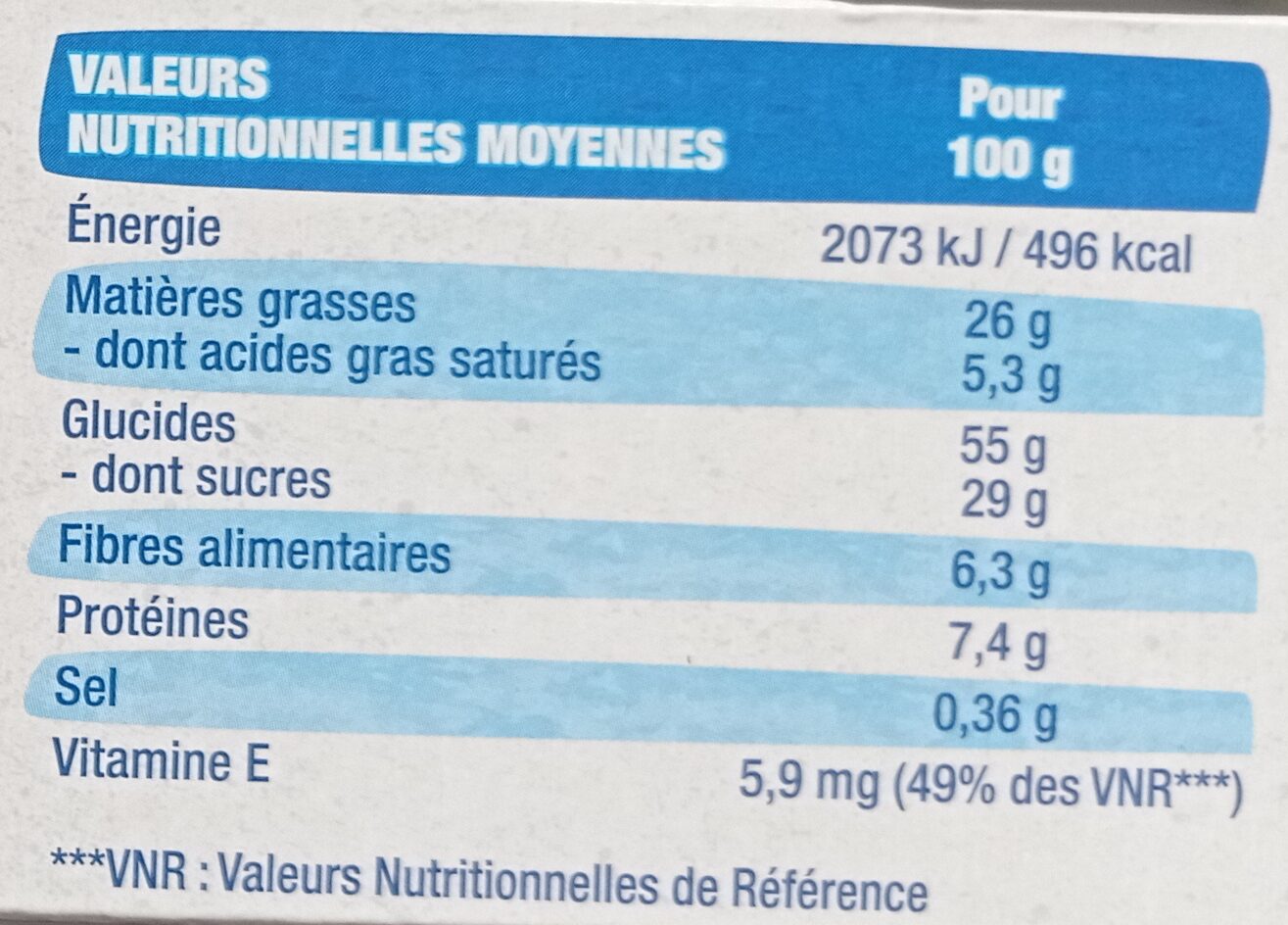Le cookie Chocolat noisettes - Bjorg - 200 g
This product page is not complete. You can help to complete it by editing it and adding more data from the photos we have, or by taking more photos using the app for Android or iPhone/iPad. Thank you!
×
Barcode: 3229820004334 (EAN / EAN-13)
Allgemengen Numm:: Cookies au chocolat et à la noisette - Le Cookie Chocolat Noisette Bio
Quantitéit: 200 g
Verpackungsart: en:Plastic, en:Tray, en:container, fr:Barquette plastique, fr:Etui en carton, fr:Film en plastique
Marken: Bjorg
Kategorien: en:Snacks, en:Sweet snacks, en:Biscuits and cakes, en:Biscuits, en:Chocolate biscuits, en:Biscuits au chocolat, en:Biscuits et gâteaux, en:Cookies au chocolat, en:Cookies au chocolat et aux noisettes, en:Snacks sucrés
Labelen, Zertifizéierungen, Auszeechnungen:
en:No gluten, en:Organic, en:EU Organic, en:Non-EU Agriculture, Source of fibre, en:Certified B Corporation, en:EU Agriculture, en:EU/non-EU Agriculture, FR-BIO-01, en:Made in France, en:No palm oil, Nutriscore, AB Agriculture Biologique, Triman


Origin of the product and/or its ingredients: Fabriqué en France
Fabrikant oder Veraarbechtungsplaatz: France
Link to the product page on the official site of the producer: https://www.bjorg.fr/produits/cookie-cho...
Geschäfter: Carrefour, Magasins U, Leclerc, carrefour.fr, Carrefour market, Franprix
Country: Frankräich
Matching with your preferences
Report a problem
Data sources
Product added on vun khrista
Last edit of product page on vun moon-rabbit.
Produkt Säit och geännert vun alex-off, beniben, ccrdz, date-limite-app, didierg, drakitsu, driveoff, ecoscore-impact-estimator, foodless, foodvisor, gavingt, grumpf, inf, jecrivaine, katchou, kiliweb, ludwig39, magasins-u, maria2023, openfoodfacts-contributors, packbot, quechoisir, quentinbrd, raphael0202, roboto-app, scanbot, tacite, yuka.Fp1AEOCPAPN-BcfTwac0_WiZOefQOfRQQSMUoQ, yuka.FuEZYYeRPvMfAvPoiaw9wDWJNengO-FyGmAkog, yuka.RzQwWlRmNEYvL3dKb2NZN3JnUG8vWU5ZK0wrWmJXV2FHK1FTSWc9PQ, yuka.SDVwY1Q0bFppcUlQdXZjajNqN2E5L2xZM2MrdFlGTzBLTzFKSVE9PQ, yuka.UTc4NlRxWW9tZDA3Z2ZJbThBNzExZTB1NEphSVozK3FFYmNPSWc9PQ, yuka.UVpGZkRhVS9qZFZYb05zd29oL1R3ZTFRbHArMFlrVzhldVpMSUE9PQ, yuka.UklRU0VQZzR2S2d3dnM4aXB5enJ3TUJ6K3JhS1QyeStEK01lSVE9PQ, yuka.Ulo4bUM1OElncVFodjhGazRScVA2OVoyMjdtWVVEM3VFc2tRSVE9PQ, yuka.Um9FRkNvTXFxOGMydHNVbDVqcnoyTlpIMXNQMVZtNmJKc05BSVE9PQ, yuka.V29NTU5QMG9pK0VqdE1JWDJ6WGIzNHB4NkpxNWJUK1VOODlOSUE9PQ, yuka.V2FBU0NhNGUrOVFMbk04Z29obis1dFozNlpheGZ6MktLZVU0SVE9PQ, yuka.VEtReUhQczV0UGdXeDhJNnd5M004ZmtxeTZHSlRXK3VHYlE4SUE9PQ, yuka.VFBvNUs3aFJxOThHbU04UTNTUFkxNEpWLzVLeGR6cTBDOVVJSVE9PQ, yuka.VjRJc1A3NWR1ZXN6aDgwTzV4SHg1L0prMXFPaURXbXVNdG9YSWc9PQ, yuka.VktRTE82SmVyT1pTdlBZRzBpTHVwZHRjd1ptc1VWTytHdE5MSVE9PQ, yuka.YmFBTk42RXdwL1lWaDhjaTh6SCtxdGQzN3JHMWZEK1BkTUVQSWc9PQ, yuka.ZktSYk02Y09wTjhCeGNjUzRRanRwSU5GNnNDTVpXVzlOZllPSWc9PQ, yuka.sY2b0xO6T85zoF3NwEKvllRKff_3jAPvZzbSmU-g4PvUC7HhfPxf64LdMqg, yuka.sY2b0xO6T85zoF3NwEKvlnN3XNP6-BnYMRbvhmmq_9yiHKOxe_ciu9DmM6g.
Last check of product page on vun moon-rabbit.














